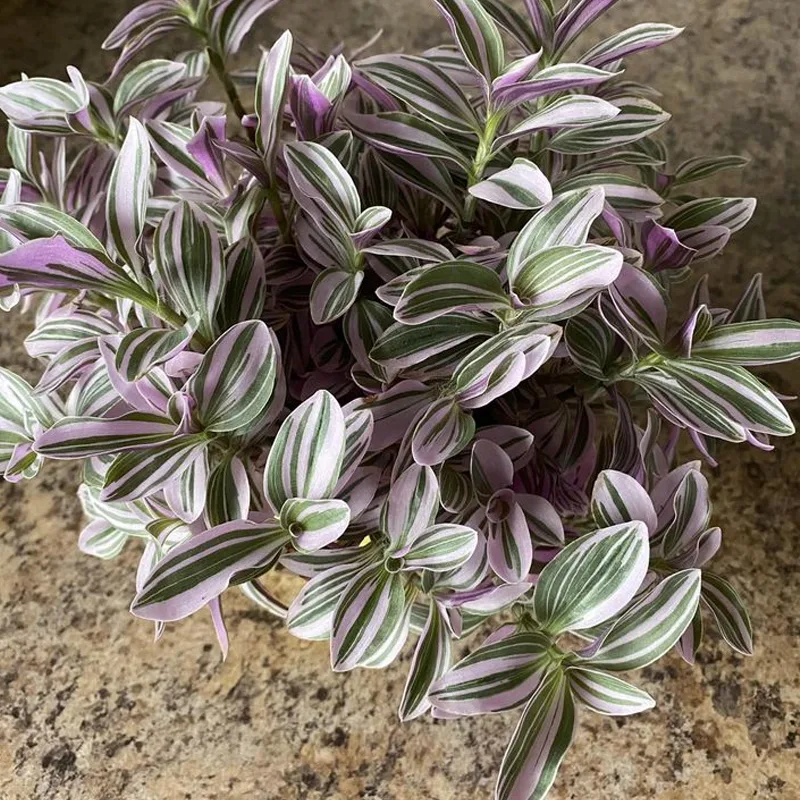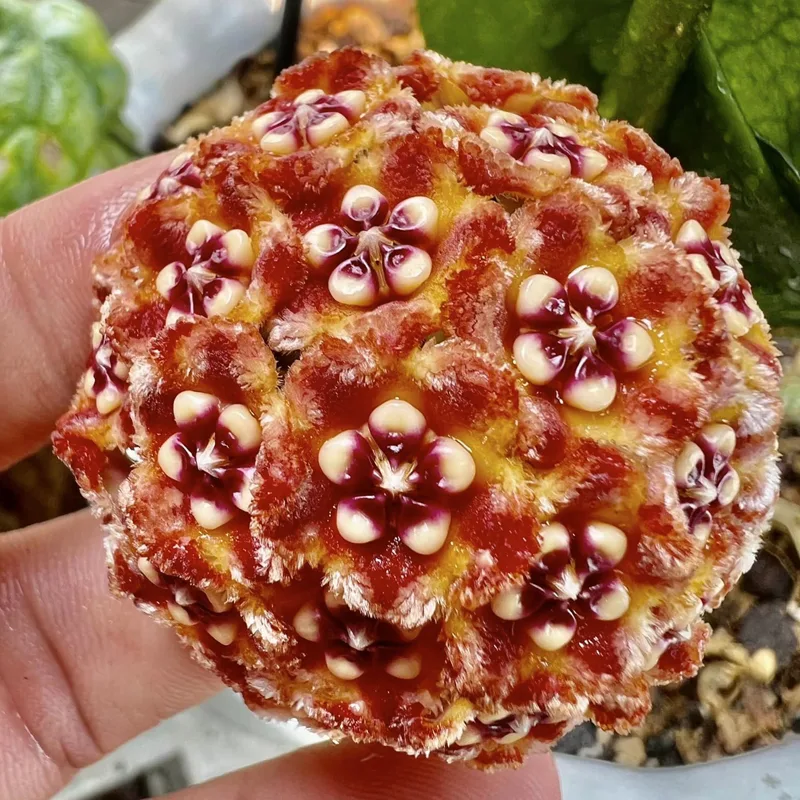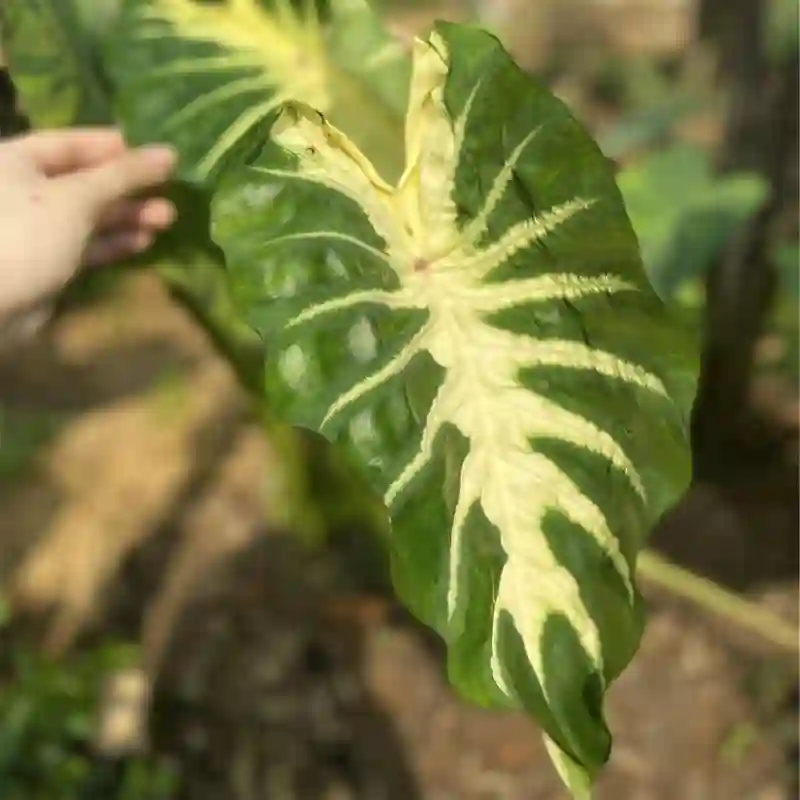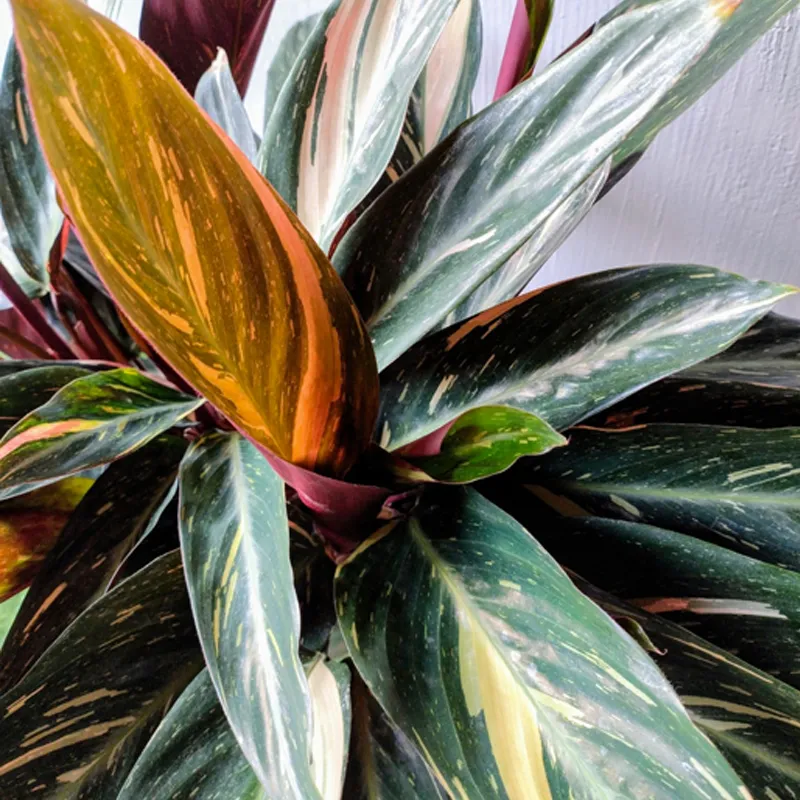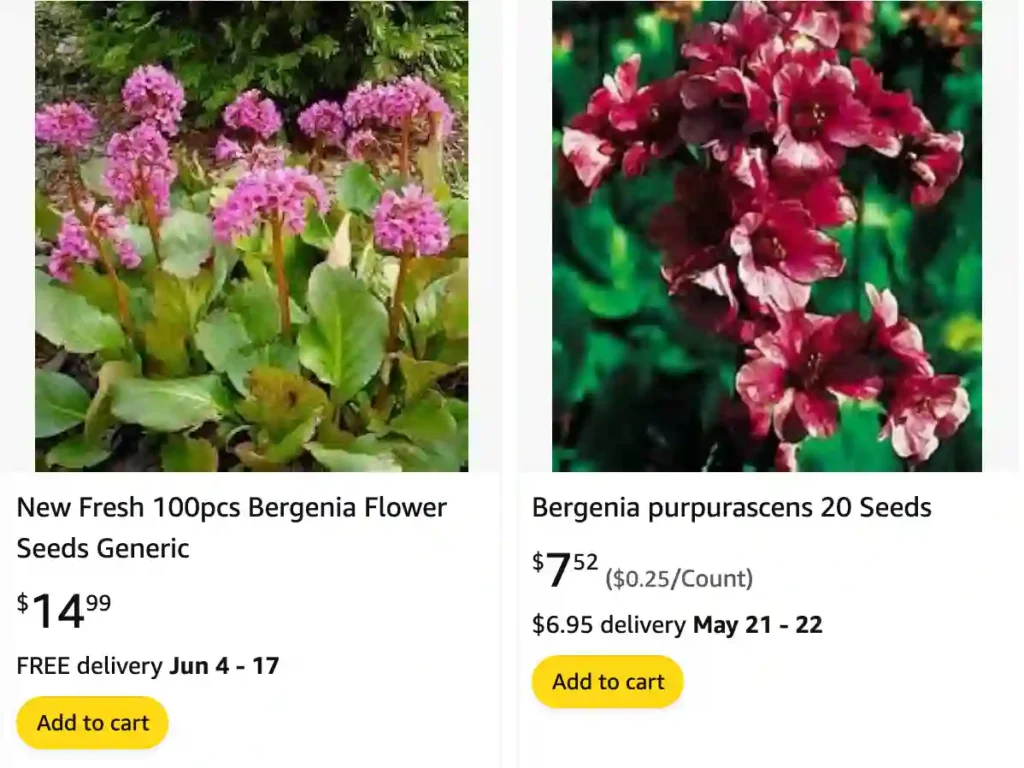
February 21 – Bergenia
"Bergenia, the pigsqueak plant, represents February 21."
Bergenia symbolizes resilience and endurance. Much like its ability to thrive in harsh conditions, you possess an inner strength that helps you overcome any challenge. Your presence is steadfast and comforting, bringing stability and quiet beauty to those around you. Like the plant’s sturdy, evergreen leaves, you remain grounded and dependable, offering support when it's needed most.
What is bergenia?
Bergenia belong to the Saxifragaceae family, also known as elephant’s ears or pigsqueak, is a perennial plant cherished for its large, glossy, evergreen leaves and clusters of delicate flowers. It’s a versatile and hardy addition to any garden, providing year-round interest with its vibrant foliage and occasional blooms.
Bergenia species
- Bergenia ciliata (Haw.) Sternb.
- Bergenia crassifolia (L.) Fritsch
- Bergenia emeiensis C.Y.Wu ex J.T.Pan
- Bergenia hissarica Boriss.
- Bergenia pacumbis (Buch.-Ham. ex D.Don) C.Y.Wu & J.T.Pan
- Bergenia purpurascens (Hook.f. & Thomson) Engl.
- Bergenia scopulosa T.P.Wang
- Bergenia stracheyi (Hook.f. & Thomson) Engl.
- Bergenia tianquanensis J.T.Pan
- Bergenia ugamica V.N.Pavlov
Bergenia vs Begonia
Bergenia and Begonia are two plants I’ve had contrasting experiences with in my garden. Bergenia, with its robust, leathery leaves and resilient nature, has been a reliable addition, especially during colder months when its pink blooms brighten up the garden. Its ability to thrive in partial shade has made it a go-to for filling in gaps in my flower beds. On the other hand, Begonias have dazzled me with their sheer variety—some with delicate, asymmetrical leaves, and others with bold, vibrant flowers. They’re perfect for adding pops of color to shady spots, though I’ve found they need a bit more attention to watering and humidity levels compared to Bergenia. Overall, both plants bring their own charm and practicality to gardening, each finding its place depending on the season and garden conditions.
Is bergenia poisonous to dogs?
While there’s conflicting information about bergenia’s toxicity to dogs, I take precautions and keep my pets away from it, just to be safe. I’ve read that ingesting certain parts of the plant can cause gastrointestinal upset in dogs, so it’s better to err on the side of caution and prevent any potential issues.
Are bergenia deer resistant?
Absolutely! Bergenia has been a savior in my garden because deer tend to steer clear of it. Its leathery leaves and sturdy structure seem to deter browsing, allowing it to flourish without constant nibbling. It’s a relief to have a plant that can thrive without becoming deer fodder.
Can you grow bergenia in pots?
Yes, you can definitely grow bergenia in pots! I’ve had success with container gardening, finding that bergenia adapts well to being grown in pots. However, it’s important to ensure the soil stays consistently moist, as container plants tend to dry out more quickly than those planted in the ground.
Does bergenia spread?
Yes, bergenia has a tendency to spread over time, forming dense clumps in the garden bed. While this can be beneficial for creating ground cover and filling in empty spaces, it’s essential to keep an eye on its growth and divide overcrowded clumps as needed to prevent it from overtaking other plants.
How to care for bergenia?
Caring for bergenia is relatively straightforward. It prefers well-drained soil and partial to full shade, though it can tolerate some sun, especially in cooler climates. Regular watering, especially during dry periods, and occasional fertilization in the spring help keep bergenia healthy and vibrant.
How to propagate bergenia?
Propagating bergenia is easy! I’ve successfully propagated it by dividing mature clumps in the early spring or fall. Simply dig up the plant and carefully separate the rhizomes, ensuring each division has roots attached. Then, replant the divisions in well-prepared soil and water thoroughly to encourage new growth.
Is bergenia a perennial?
Yes, bergenia is indeed a perennial plant. It reliably comes back year after year, providing consistent beauty and structure in the garden landscape. Its evergreen foliage adds interest even in the winter months, making it a valuable addition to any perennial garden.
Is bergenia invasive?
While bergenia isn’t typically considered invasive, it can spread if left unchecked. Its tendency to form dense clumps means it can take over garden beds if not divided and thinned out periodically. However, with proper maintenance and monitoring, bergenia can be managed effectively in the landscape.
What to plant with bergenia?
Bergenia pairs well with a variety of shade-loving perennials, such as hostas, ferns, and astilbes. The contrasting textures and colors create a lush and varied garden landscape. I’ve also found that combining bergenia with spring-blooming bulbs like daffodils or tulips adds seasonal interest and color.
When do bergenias flower?
Bergenias typically flower in the spring, sending up tall stalks topped with clusters of delicate pink, red, or white blooms. It’s a delightful sight to see these flowers emerge after the long winter months, signaling the arrival of spring in the garden.
Why doesn’t my bergenia flower?
If your bergenia isn’t flowering, it might be due to several factors, including insufficient sunlight, overcrowding, or poor soil conditions. Providing adequate light, spacing out plants, and ensuring the soil is well-drained and fertile can help encourage flowering. Additionally, deadheading spent blooms can promote repeat flowering throughout the season.
How to deadhead bergenia?
Deadheading bergenia is simple and can be done by removing spent flowers as they fade. Simply snip off the flower stalks at the base using sharp pruning shears or scissors. This not only tidies up the plant’s appearance but also encourages continued blooming and prevents the plant from expending energy on seed production.
Is bergenia evergreen?
Yes, bergenia is evergreen, meaning it retains its foliage year-round. Its large, glossy leaves provide interest and texture in the garden even during the winter months when many other plants are dormant. This makes bergenia a valuable addition to the landscape for year-round color and structure.
What is eating my bergenia leaves?
If you notice damage to your bergenia leaves, it could be caused by various pests such as slugs, snails, or certain insects. These pests may feed on the foliage, causing holes or chewed edges. Inspecting the plant carefully and using appropriate pest control methods, such as slug traps or insecticidal soap, can help protect your bergenia from further damage.
Where to buy bergenia?
You can purchase bergenia from local nurseries, garden centers, or online retailers that specialize in perennial plants. It’s always a good idea to buy from reputable sources to ensure you’re getting healthy, high-quality plants. Additionally, you may find bergenia available at plant sales, botanical gardens, or through gardening clubs and societies.
Will bergenia grow in shade?
Yes, bergenia thrives in partial to full shade, making it an excellent choice for shady areas of the garden where other plants might struggle. It can also tolerate some sun, especially in cooler climates, but it generally prefers shaded conditions. Providing adequate moisture and organic matter in the soil will help bergenia thrive in shady locations.
Do rabbits eat bergenia?
While rabbits typically avoid eating bergenia due to its leathery leaves and sturdy structure, they may occasionally nibble on it if food sources are scarce. However, in my experience, rabbits haven’t been a significant issue with bergenia in my garden. Keeping the area well-maintained and monitoring for any signs of nibbling can help prevent damage from rabbits.
Bergenia Cordifolia vs Crassifolia
Among the Bergenia species, Bergenia Cordifolia stands out as one of the most widespread, featuring round leaves with smooth edges and flowers ranging from light to dark pink; on the other hand, Bergenia Crassifolia holds the title of the largest species, with flower stems extending 45 to 60 cm, and its slightly toothed leaves accompany magenta-pink blossoms.
If i die, water my plants!
